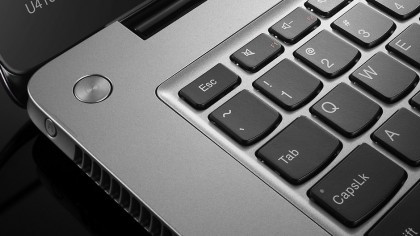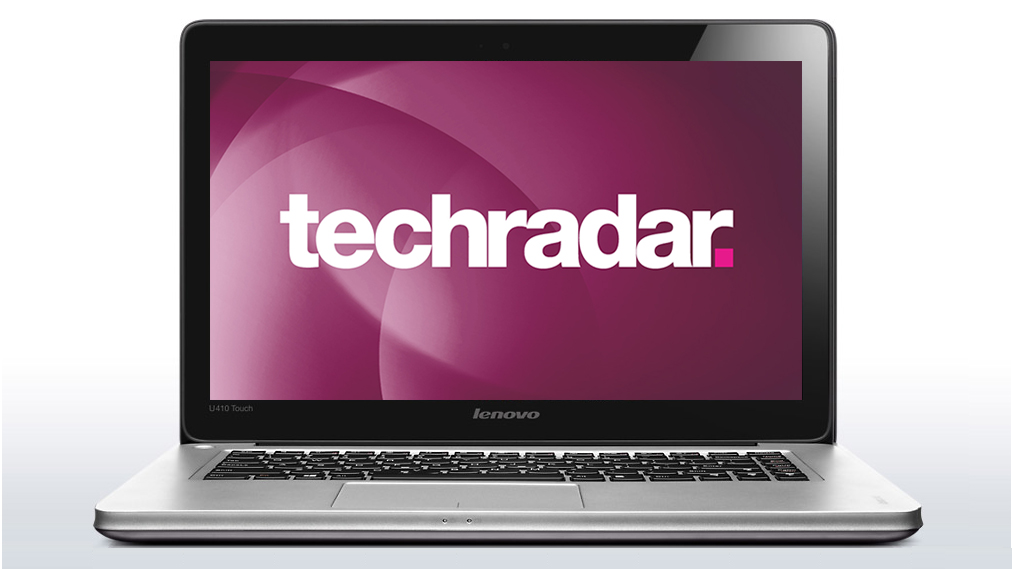Why you can trust TechRadar
Benchmarks
Cinebench 11: 1.95
3D Mark: Ice: 43433, Cloud: 4023, Fire: 725
Battery Eater Pro: 153 minutes
We had high hopes for the performance of the Lenovo U410 Touch. A fairly new Intel processor, dedicated 2GB Nvidia graphics, SSD storage for Windows and 8GB of RAM all together sounds like a recipe for a surprisingly potent machine.
In terms of processor performance, the Lenovo IdeaPad U410 Touch is actually a little on the disappointing side, though. Its score in Cinebench is normal for a mid-range laptop, but it should be higher. The Dell XPS 18 runs the exact same chip and scored 2.31, compared to just 1.95 here. In fact, the HP Spectre XT TouchSmart scored 2.25, and that actually runs the older version of the processor in the Lenovo U410.

So performance in the CPU was a little lower than we'd hoped, but that doesn't mean the end of the world. In practice, it doesn't feel like you're struggling for muscle in day-to-day tasks. It's only in the more intensive or professional tasks that this discrepancy might be an issue, but because this machine does tend towards being a more capable Ultrabook, that's something to bear in mind.
Of course, with a standard Ultrabook processor but a meaty dedicated Nvidia 2GB graphics card, it's games or other graphically-intense applications that will see the biggest improvement.
The 3D Mark results are strong, bringing it inline with the Samsung Series 7 Chronos, which costs £300 more. In more practical tests, we were able to get 23 frames per second out of BioShock Infinite with everything maxed out - that even beats the gaming-centric Gigabyte U2442F Ultrabook. When we dropped BioShock's settings down to 'High' we hit 52 frames per second, so you're able to get some very smooth, very good-looking gaming out of this laptop.

It even does fairly well for speed coming on from sleep or wake - generally, it was just about ready to go by the time we'd finished opening the lid from closed.
Sign up to the TechRadar Pro newsletter to get all the top news, opinion, features and guidance your business needs to succeed!
With graphics performance to match the considerably more expensive Samsung Series 7 Chronos and Gigabyte U2442F, you'd expect there to be compromises somewhere, and it's true that not every part of it lives up to very high standards.
One area we did notice struggling a little was network performance. Large downloads could slightly affect performance (but nothing too major), but more significant was when we tried playing HD videos from a network drive - there were major drop-out issues, with films frequently stalling, then dropping the video and audio out of sync when resuming. For reference, we've played the exact same videos on numerous other machines without issue. Playing an SD film didn't have the same issues, though.

When we did a speedtest.net check on the Lenovo IdeaPad U410 Touch and another computer right next to it (both over Wi-Fi), the Lenovo IdeaPad U410 Touch reported speeds noticeably slower than the other computer - 9Mbps slower, in fact, peaking at around 20Mbps instead of 29Mbps.
Now, obviously, 20Mbps instead of 29Mbps isn't exactly a massive problem, and we have to say that we didn't really notice this as an issue until we started streaming the HD video, but later we also had an odd drop-off in download speeds in Steam (it having been fine previously). It's definitely something to be aware of, especially in light of its gaming credentials. It didn't give us any obvious issues with online games, during our time with it, though.
The screen is pretty decent, with movies appearing crisp and clear. It is highly reflective, though, and when you get a black screen in a movie or game, you can see how uneven the backlighting is. That also speaks to how it handles blacks: not brilliantly, but still perfectly acceptable. In terms of colours, they seem nice and natural, if a tad on the dull side.

The display does wash out quickly if your viewing angle is too high, and darkens if it's too low. Side-to-side viewing angles aren't too bad, but they're still not impressive. The resolution is also fine for the price - 1440 x 900 would be nice, but the lower resolution means you get even more out of the graphics card.
In terms of usability, it's not bad at all. The touchscreen is nicely responsive, as is the trackpad. The latter is a generous size, too, meaning that Windows 8's gestures were never activated accidentally during our time with it, but were still easy to invoke.
The keyboard is a tad on the small size, but is comfortable to use. It's a shame that there isn't much travel in the keys, but there's enough resistance that you still get plenty of feedback when you type.

Our only real issue with it is that the case under it bows when pressure is applied. When you're typing very lightly, it's not noticeable, but when you're working fervently at something long (say, a lengthy laptop review), it just feels off. It made little difference to our typing accuracy, so it's far from a deal-breaker, but it's not exactly pleasant or ideal in a £749.99 / US$1,049 (around AU$1,225) machine.
Battery life is another area where the Lenovo IdeaPad U410 Touch disappoints somewhat. 200 minutes is what we're after from Ultrabooks in our intense battery tests, so 153 minutes is on the short side.
It's not catastrophic, but clearly the additional power of this machine hasn't been balanced with additional battery space. Perhaps a Haswell chip would have fared better, but you'll have to wait another year for that, we guess.
